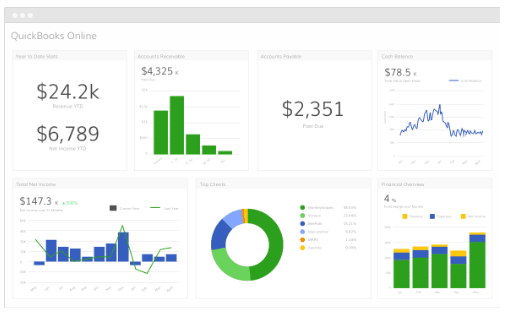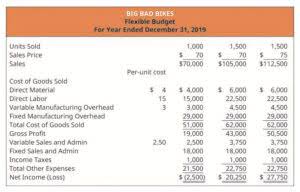
This example shows how to calculate and understand the equity multiplier using a real-world SaaS company. It also illustrates how this metric connects to a company’s debt, ROE, financial risk, and asset turnover. This means that for every $1 of shareholders’ equity, Salesforce has approximately $1.69 in assets. It indicates Salesforce is using a mix of equity and debt to finance its assets. We calculate the equity multiplier as average total assets divided by average total equity.
Key Takeaways

A higher equity multiplier can signal elevated financial risk—the company may be more vulnerable to insolvency if it can’t meet its debt obligations. On the flip side, a lower multiplier might suggest a safer bet, with the company being less burdened by debt. Well, a high equity multiplier is like a flashing neon sign saying, “We love debt! ” It means the company is heavily relying on borrowed funds to finance its assets.

Equity Multiplier = Total Assets / Total Shareholders’ Equity
It equals (a) debt to equity ratio divided by (1 plus debt to equity ratio) or (b) (equity multiplier minus 1) divided by equity multiplier. No, the appropriate level of the equity multiplier varies by industry. Capital-intensive industries typically have higher equity multipliers due to their reliance on debt to finance large assets. The equity multiplier is a ratio used to analyze a company’s debt and equity financing strategy.
Industry Norms and the Equity Multiplier

Total equity is on a company’s balance sheet or in its shareholder’s equity section. Travel Agency Accounting For some companies, a high equity multiplier does not always equate to higher investment risk. A high use of debt can be part of an effective business strategy that allows the company to purchase assets at a lower cost. This is the case if the company finds it is cheaper to incur debt as a financing method compared to issuing stock.
- Consider Apple’s (AAPL) balance sheet at the end of the 2021 fiscal year.
- A business with a high equity multiplier but low shareholder equity has significant assets but little equity cushion.
- So it’s like looking at a funhouse mirror—things aren’t always as they seem.
- 1) To increase the equity multiplier through increasing debt, a company can take on more debt.
- But during downturns, if the company is having a good customer base and has the history of consistent devidnd payment, it is a good idea to raise funds through equity.
The equity multiplier and DuPont analysis
CFI is the global institution behind the financial modeling and valuation analyst FMVA® Designation. CFI is on a mission to enable anyone to be a great financial analyst and have a great career path. In order to help you advance your career, CFI has compiled many resources to assist you along the path. ABC Company is an internet solutions company that supplies and installs internet cables in homes and business premises. The owner, Jake Caufield, wants the company to go public in the next year so that they can sell shares of the company to the public.
Company

A higher equity multiplier generally indicates higher financial risk, as it suggests a greater reliance on debt. This increases the company’s exposure to interest rate fluctuations and economic downturns. While the equity multiplier is a powerful tool, it is not without its limitations. It does not account for the cost of debt or the quality of a company’s assets. Additionally, it can sometimes give a misleading picture if a company has significant off-balance-sheet liabilities or if its asset base includes a large proportion of intangible assets.
- Therefore, the company has the potential for higher profits when EBIT increases, but it also takes on more risk that it will not be able to cover its fixed financing costs if EBIT is too low.
- By calculating the ROE under DuPont analysis, the investor gets a clear idea of how much operational efficiency the company has plus how much efficiency of the assets the company has achieved.
- The company can leverage debt to expand while paying less in interest expenses owed to creditors.
- As we mentioned above, equity multiplier only provides a snapshot of a company’s financial leverage at a single point in time.
- This means Apple has $1.83 in assets for every $1 in shareholders’ equity.
- For instance, SaaS businesses often have different leverage profiles than capital-intensive industries.
A lower ratio indicates a stronger equity base and potentially a sturdier financial foundation. Both the debt ratio and equity multiplier are used to measure a company’s level of debt. Companies finance their assets through debt and equity, which form the foundation of both formulas.
How to Evaluate Consumer Staples Stocks: A Guide for Informed Investors
- The higher the equity multiplier, the higher is the financial leverage, which indicates that the company relies more on debt to finance its assets.
- Both the debt ratio and equity multiplier are used to measure a company’s level of debt.
- In this article, we’ll explore the similarities, differences, and unique insights offered by the equity multiplier and other financial ratios.
- Discover how to hire a healthcare data analyst from LATAM, avoid common mistakes, and leverage offshore talent for your US healthcare company.
- It’s helpful by itself and as part of a DuPont analysis, which is a financial tool that breaks out how a company generates a return on equity (ROE).
- A higher equity multiplier indicates greater financial leverage and use of debt financing.
On the flip side, a low equity multiplier whispers, “We’re the equity multiplier is equal to: playing it safe,” indicating that the company is less dependent on debt and is funding its assets primarily through equity. A high Equity Multiplier entails that the firm isn’t highly leveraged and the ownership is highly diluted. If an equity multiplier is low, it implies that the company is highly leveraged, increasing the investment risk. This is a simple example, but after calculating this ratio, we would be able to know how much assets are financed by equity and how much assets are financed by debt. To explain leverage analysis, we use the example of Apple Inc. and Verizon Communications Inc.
But XYZ Company is less leveraged than ABC Company, and therefore has a lower degree of financial risk. This is because a smaller portion of XYZ Company’s financing comes from debt, which must be repaid with interest. It’s evident that ABC Company is the least appealing of the two companies. Equity multiplier is a useful tool for assessing a company’s financial leverage. Equity multiplier can also compare the financial structure of different companies. A company with a higher equity multiplier is usually considered to be more leveraged than a company with a lower equity multiplier.
Growth stage
The price-to-book (P/B) ratio is more related to valuation but still offers useful insights when compared to the equity multiplier. Tom’s return on equity will be negatively affected by his low ratio, however. By calculating the ROE under DuPont analysis, the investor gets a clear https://www.emmeduecarni.it/2025/03/24/simplifying-implementation-of-fasbs-not-for-profit/ idea of how much operational efficiency the company has plus how much efficiency of the assets the company has achieved.
